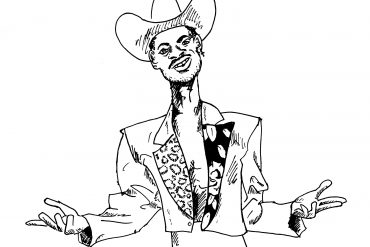“Immersive realism is a form of the genre that strives to balance elements of fantasy (“magic”) and realism”. Studio Ghibli, a film studio based in Koganei, Tokyo, blends the little moments of life with the fantastical plots of Ghibli films by focusing on the blades of grass in a meadow, or the way a bed can swallow a body whole with cushions, or saturating the pigment of rolling hills that hug around a city.
Many revered films like “My Neighbor Totoro” or “Spirited Away” encompass magical and surrealist plots, yet after watching these films, the viewer can’t help but feel a deep connection to the mundane moments of life on this earth.
OMSI (The Oregon Museum of Science and Industry) held its ninth Studio Ghibli Film Festival by showing twenty different films from January 12th-February 25th. This film festival is partnered with GKIDS, an American film distributor that works with Ghibli films. I have been a lover of the studio’s films for a while, but this was my first time attending the festival. I decided to see “Castle in The Sky” (1986) as that was a film I haven’t seen yet.
“Castle in The Sky” follows an array of characters that idealize and idolize this mystical castle in the sky called Laputa. The first main character, Pozu, has grown up only knowing the journal entries and vague photographs he inherited from his late father that share the discoveries of Laputa. In order to save up and continue his father’s legacy, he works in a mine and dreams of the utopia his father once described. One day, a girl (Sheeta) falls from the sky. Pozu rescues her and discovers she is the heir to Laputa and she is the key to finding this mystical land.
This film draws on many themes, but the main one I noticed was the downfalls from idealizing and colonizing land. Throughout the film, Laputa is described as this utopian society that was well-advanced in technology and a power-house of resources. The villains in this story are those who wish to find this castle and use its power to their advantage. The director, Hayao Miyazaki portrays this message by portraying the duality of man. Pozu and Sheeta simply have curious intentions. When they first arrive in Laputa, they realize everything is overgrown and deserted. Roots have taken over entryways and flowers have sprouted from the robots that now care for the wildlife that inhabit the land. Miyazaki shows the beauty in a deserted land that has been untouched for many years. Everything is quiet as Pozu and Sheeta roam the floating earth until the military and main villain, Muska, show up. Tanks roll in, explosives and gun shots sound the land as the birds flutter away and the robots retreat. Muska rips apart the roots to get to the power source of Laputa, a powerful stone that allows the land to float. Pozu and Sheeta realize perhaps Laputa was better off without humans. Sheeta performs a destruction spell and the castle begins to crumble. Robots are ejected from their pods and fall down to their demise. Roots tangle around the fortress and encapsulate what once was.
Miyazaki always seems to simplify what matters most in this world through his films. Though Pozu was working in a mine with soot and hard long hours, he had a community that cared for him and looked out for him. Though Sheeta was the heir to a paradise, she continually longed for the home she knew. She talked of the animals she cared for and though it was a simple life, she said she was happy. Though Laputa was full of beauty and power, that did not justify the invasion of its land.
Miyazaki displays immersive realism not just through his messages, but through his animation style as well. One scene I think of in particular is when Sheeta and Pozu are quite hungry from running away from pirates. They take refuge in a mine and Pozu pulls out some eggs on toast. The scene focuses on their joy while eating this simple meal. The egg flops a bit from their mouths and they giggle at the silliness. The juxtaposition from the magical and mystifying scenes to the simple and quiet scenes that focus on everyday life, blurs the line between both. The viewer is left to wonder which one is the magic and which one is real life–or perhaps they both are.
Studio Ghibli films have achieved this blending of magic and realism beautifully through animation style and surrealist plots. They allow the viewer to ponder what’s important in life and find solace in the silly little moments that make up reality. OMSI’s film festival resurfaces these films each year to perhaps help reset our intentions, celebrate the simplicity, and romanticize the realness of our lives.





